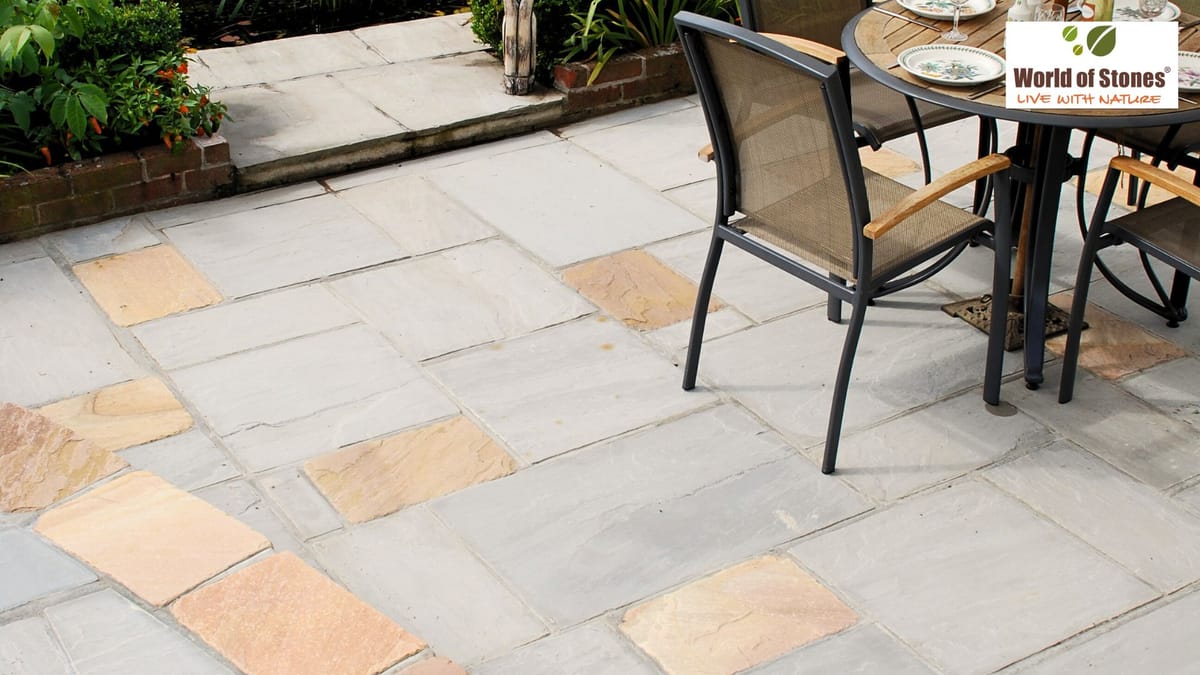What is Sandstone? Everything You Need to Know

what is sandstone
Sandstone is a protean and popularly used natural stone that has been a favourite in construction, architecture, and landscaping for centuries. With its unique texture, durability, and exquisite appeal, sandstone continues to be the best choice for multiple applications.
In this blog, we will explore what sandstone is, its creation, types, uses, pros and cons, and where you can find the best quality sandstone suppliers like World of Stones in the USA, UK, and globally.
History of Sandstone
Sandstone has a vibrant history that dates back to prehistoric civilizations. It was widely used in the construction of historic structures such as Petra in Jordan, the Red Fort in India, and many ancient temples and monuments. Its lasting beauty and resilience made it a preferred material for building. Even today, sandstone remains a sign of timeless elegance in both modern and traditional architecture.
How Sandstone is made
Sandstone is a sedimentary rock mainly generated of sand-sized mineral particles or rock snippets. The creation of sandstone starts with the collection of sand in various environments such as beaches, rivers, or deserts. Over centuries of years, these sand particles are immersed under layers of sediment, restrained by pressure, and cemented together by minerals like quartz or calcite. This process, known as lithification, modifies loose sand into solid sandstone, giving it its special grainy texture.
Types of Sandstones
It has multiple options of colors and textures, depending on the mineral content and the environment in which it was formed. Here are some general types of sandstone include:
-
Quartz Sandstone: Composed primarily of quartz grains, it is well known for its hardness and longevity.
-
Arkose Sandstone: Contains a significant amount of feldspar, giving it a pink or reddish hue.
-
Lithic Sandstone: Contains rock fragments and is frequently darker in color.
-
Graywacke: A mixed-grain sandstone with a pattern of clay and silt, typically darker and less uniform in appearance.
Uses of Sandstone
Sandstone's versatility creates it convenient for a wide range of applications, including:
-
Landscaping: Used in garden paths, outdoor patios, and retaining walls.
-
Construction: famous for building facades, walls, and columns.
-
Flooring: Superior for both interior and exterior flooring areas due to its slip-resistant surface.
-
Decorative Elements: Used in statues, fountains, and other decorative features.
-
Fireplaces: Adds a rural charm to home interiors.
Pros and Cons of Sandstones
Pros:
-
Aesthetic Appeal: Natural, earthy tones that mix well with different design styles.
-
Durability: Obstructive to weathering and can last for decades with proper care.
-
Versatility: Fit for a wide range of applications, from flooring to landscaping.
-
Eco-Friendly: A natural material that has a lower environmental influence compared to synthetic options.
Cons:
-
Porosity: It is mushy and may absorb water, leading to potential staining if not sealed properly.
-
Maintenance: Requires daily sealing to protect against staining and moisture.
-
Softness: Some types of sandstone are softer and more prone to scratching and intersection.
Also read:- A Beginner’s Guide to the Different Types of Natural Stone for Construction
How to Find the Best Quality Sandstone Suppliers?
If you're looking for the best quality sandstone for your next project, World of Stones is a credible supplier offering a broad range of sandstone products. Whether you're in the USA, UK, or anywhere globally, World of Stones supplies high-quality sandstone tiles, pavers, and more to meet your project needs.
FAQs
Que. Is sandstone soft or hard?
Ans. It turns in hardness depending on its mineral formation. While some types are absolutely hard and durable, others can be softer and more perceptive to scratching.
Que. What is sandstone good for?
Ans. It is an excellent choice for outdoor landscaping, construction, and decorative intention. Its natural beauty and durability make it suitable for patios, pathways, building facades, and more.
Que. What is sandstone used for?
Ans. It is used in a diversity of applications, including flooring, walls, paving, garden features, and even in the construction of massive structures.
Que. Where is sandstone found?
Ans. Sandstone is found globally, with considerable accrues in the USA, India, Australia, and the UK. Each region produces it with unique characteristics and colors.
Que. Does sandstone dissolve in rain?
Ans. It is generally resistant to rain; however, prolonged unveiling to acidic rain can cause some types of sandstone to weather and erode over time. Proper sealing can help defend sandstone from the elements.
Also read:- World of Stones: Crafting Excellence in Natural Stone Paving & Beyond
Conclusion
It is a lasting natural stone with a strong history and a wide range of applications. Its exquisite durability, and versatility make it an excellent choice for different- different projects, from landscaping to construction. Whether you're looking to renovate your garden with sandstone pavers or build a glorious sandstone fireplace, this natural stone has something to offer. For high-quality sandstone products, visit World of Stones and explore their detailed collection.